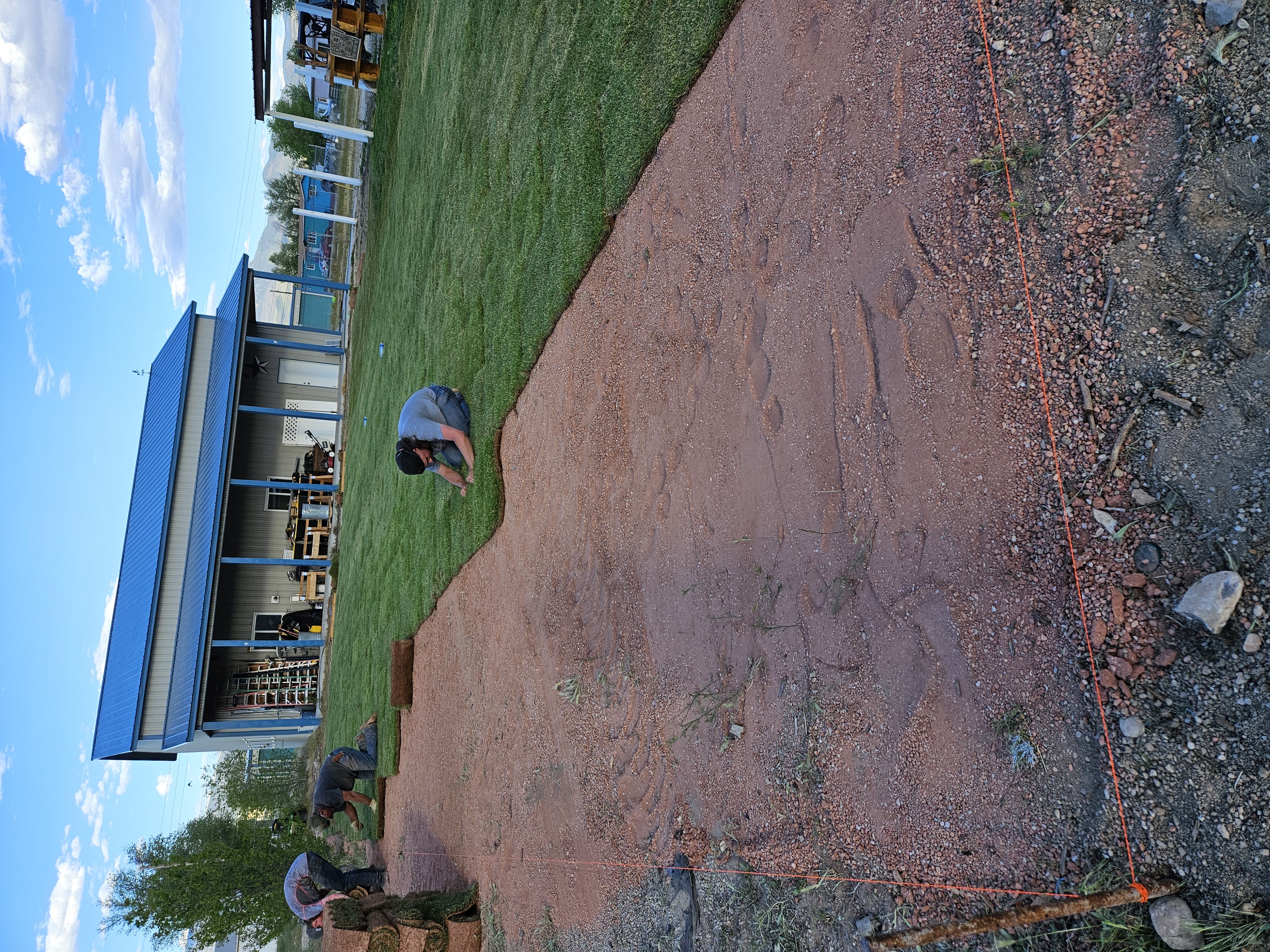Groundwork with C&K
Laying the foundation for better landscapes—expert advice, local insights, and outdoor inspiration.
Expert Tips for Thriving Utah Landscapes
Welcome to Groundwork with C&K, your go-to resource for expert landscaping insights, sustainable design ideas, and smart outdoor solutions tailored for Utah living. Whether you're dreaming of a drought-tolerant garden, planning a full-yard transformation, or just want to make your landscape easier to maintain, we’re here to help you lay the foundation for a yard that’s as functional as it is beautiful.

What Does a Landscaper Actually Do?
When most people think of a landscaper, they might picture someone mowing lawns or planting flowers. While those tasks are certainly part of the job, professional landscapers do far more than yard maintenance. Their expertise lies in transforming outdoor spaces into functional, beautiful, and sustainable environments. Whether it’s for a residential property, commercial development, or public park, landscapers wear many hats and bring a range of skills to each project.
In this article, we’ll explore what landscapers actually do—from design and planning to installation and maintenance—and how hiring a landscaping professional can elevate the value and livability of your property.
Landscape Design and Planning

A professional landscaper often begins by evaluating the space and consulting with the property owner to understand goals, preferences, budget, and how the space will be used. This phase may include:
Site analysis: Assessing soil conditions, sun and shade patterns, wind exposure, drainage, and existing structures.
Design development: Creating a scaled landscape design that includes layout, plant selection, hardscapes, lighting, and water features.
Permits and compliance: Ensuring designs meet local regulations, zoning codes, and environmental guidelines.
Landscape designers use their training in horticulture, architecture, and environmental science to create blueprints that balance aesthetics with functionality.
Site Preparation and Grading
Before a single plant goes into the ground, a landscaper prepares the site. This includes:
Clearing existing vegetation and debris
Grading the soil for proper drainage
Amending the soil with compost, topsoil, or sand
Installing irrigation infrastructure
Proper grading is essential to prevent water pooling and soil erosion, and to ensure that patios, walkways, and garden beds are built on a stable foundation.
Hardscape Installation
Hardscapes are the non-plant elements of a landscape—patios, retaining walls, walkways, fire pits, fences, and pergolas. These features enhance usability and add structure to the yard.
Landscapers:
Excavate and level areas for hardscape elements
Pour concrete or install pavers, stone, or brick
Build retaining walls to manage slopes and prevent erosion
Construct outdoor kitchens, fire features, and seating areas
This part of the job often requires skilled labor, knowledge of construction techniques, and attention to engineering details.
Plant Selection and Installation

Choosing the right plants for a specific climate, soil type, and light conditions is critical to long-term success. Landscapers:
Select trees, shrubs, perennials, and ground covers suited for the area
Consider native and drought-tolerant species for sustainability
Follow spacing and planting depth guidelines
Apply mulch and install edging to reduce weeds and retain moisture
A good landscaper also thinks about seasonal interest, bloom times, and how plantings will look as they mature.
Irrigation and Drainage Systems
Water management is one of the most important parts of landscaping. A professional landscaper may install:
Sprinkler systems with smart controllers
Drip irrigation for garden beds and xeriscapes
French drains and swales to redirect excess water
Rainwater harvesting systems
These systems help conserve water while ensuring that plants stay healthy through Utah’s dry seasons.
Lighting and Electrical Work
Landscape lighting increases safety, extends the usability of outdoor spaces into the evening, and highlights architectural and natural features.
Landscapers install:
Pathway lights
Uplighting for trees and walls
Deck and step lighting
Solar-powered or low-voltage systems
Some lighting work may require a licensed electrician, but many landscapers are trained to install basic systems.

Lawn Installation and Care
Grass is still a central feature in many Utah landscapes. Landscapers:
Prepare the soil for sod or seed
Choose the right turf variety for the climate (e.g., Kentucky Bluegrass, Tall Fescue)
Install sod rolls or use hydroseeding techniques
Set up regular mowing, fertilization, and aeration schedules
For clients seeking low-maintenance or eco-friendly alternatives, landscapers may suggest replacing lawns with ground covers or xeriscaped elements.
Ongoing Landscape Maintenance
Once a project is complete, many clients hire landscapers for routine care, which might include:
Seasonal pruning and trimming
Mulch replenishment
Pest and weed control
Irrigation system checks
Lawn care and seasonal cleanups
Maintenance is essential for protecting your investment and keeping your property looking its best year-round.
Specialty Services
In addition to traditional landscaping, many professionals offer:
Xeriscaping for water-efficient yards
Landscape renovation for outdated or overgrown properties
Outdoor living enhancements like patios, pergolas, and lighting
Erosion control for hillsides or construction sites
Stormwater management systems
Why Hire a Professional Landscaper?
While DIY landscaping projects can be rewarding, they often involve more complexity than expected. A professional landscaper brings:
Technical expertise
Access to quality materials and plants
Efficient project management
Long-term planning to avoid costly mistakes
Whether you want a new lawn, a custom patio, or a drought-resistant garden, a landscaper can bring your vision to life while enhancing the beauty and value of your home.
Need help with your landscape project in Central Utah?
Contact C&K Landscaping today to schedule a consultation and see how we can turn your outdoor space into something exceptional.
